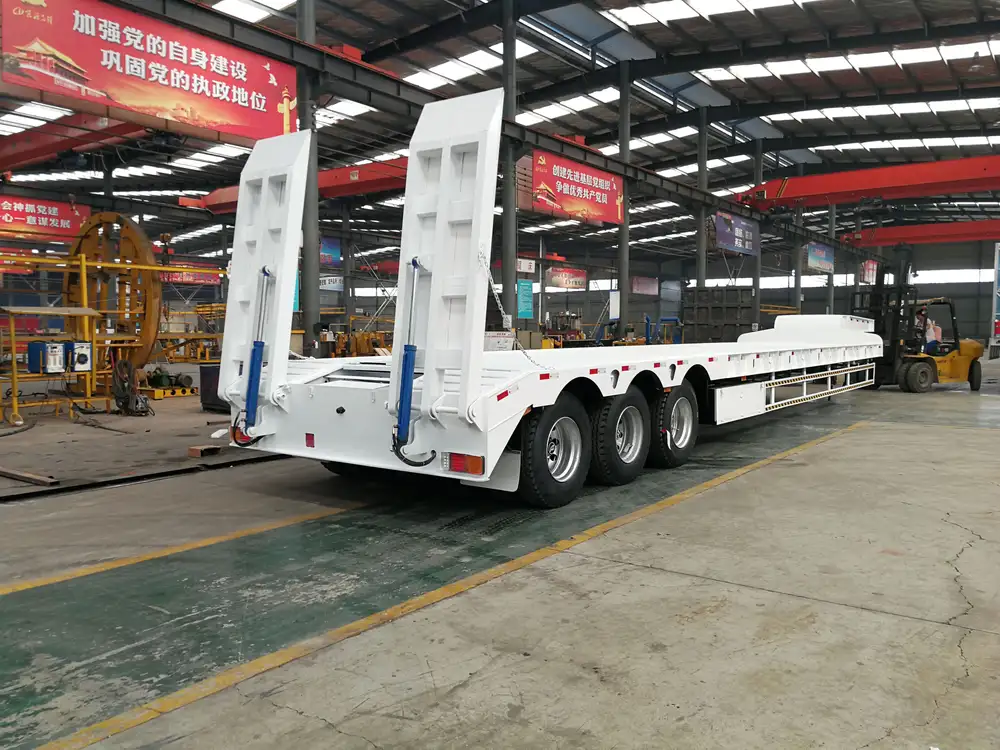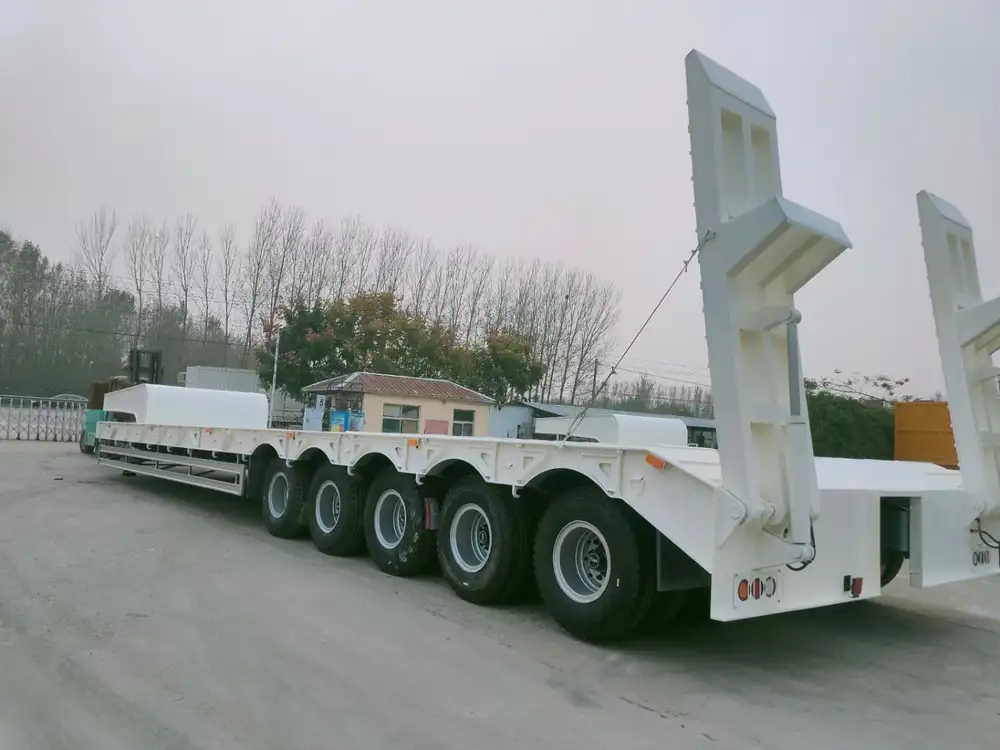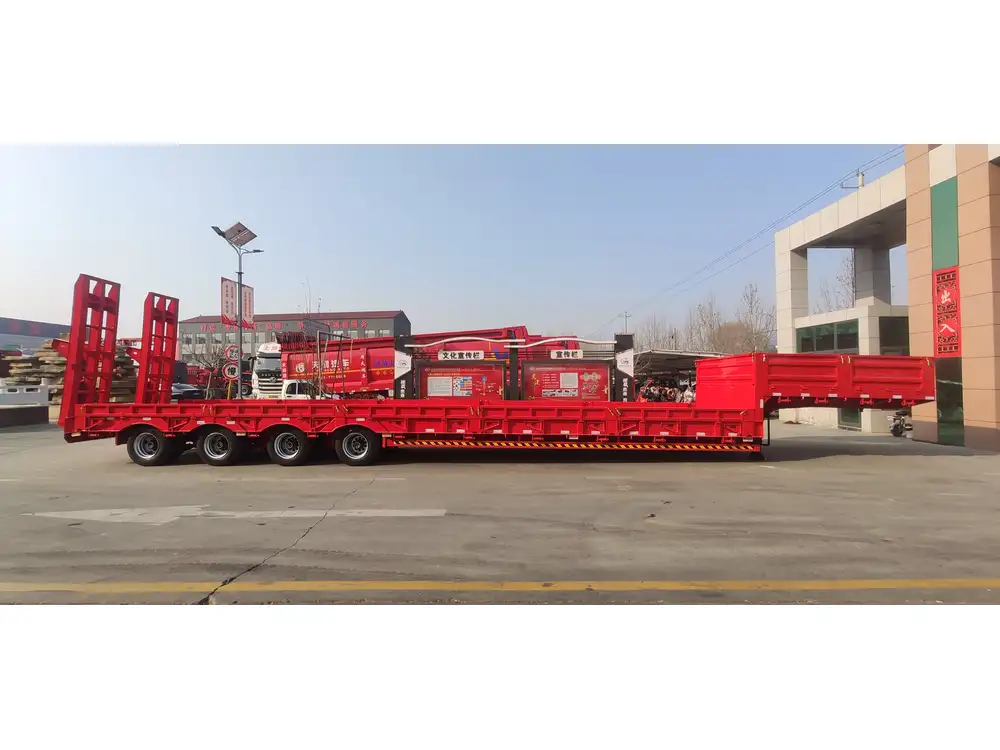The relevance of semi-trailers in the logistics and transportation sectors cannot be overstated, particularly when it involves specialized models like spacecraft semi-trailers. Designed for the efficient transport of spacecraft and related equipment, these trailers are a cornerstone in the aerospace industry. But what drives their cost? This article dissects the factors influencing the pricing, guiding potential buyers through the complex terrain of semi-trailer acquisitions.
Key Factors Influencing the Cost of Spacecraft Semi-Trailers
Understanding the pricing dynamics of spacecraft semi-trailers requires a multifaceted approach. Various elements converge to determine the final price—ranging from material costs to technological advancements. Here are the key factors:
| Factor | Description |
|---|---|
| Material Quality | High-grade steel and aluminum increase durability but raise costs. |
| Design Complexity | Custom designs tailored to specific spacecraft models can significantly add to pricing. |
| Technological Features | Advanced safety and monitoring systems contribute to higher costs but improve efficiency and safety. |
| Manufacturer Reputation | Established manufacturers often command higher prices due to reliability and performance history. |
| Size and Capacity | Larger trailers capable of carrying heavier payloads typically incur higher costs. |
| Market Demand | Economic conditions and demand fluctuations impact pricing strategies. |
| Certification | Compliance with industry regulations may necessitate extensive testing and modification, affecting base costs. |
| Geographic Variability | Transportation and logistic costs can vary significantly by region, impacting overall pricing. |
| Warranty and Service | Comprehensive warranties and service packages can elevate prices but provide long-term value. |
Material Quality: The Backbone of Cost
In the realm of manufactured goods, the quality of materials used plays a crucial role in determining not just the durability but also the overall cost. Spacecraft semi-trailers are often built with high-grade steel or aluminum, chosen for their weight-to-strength ratio, which is critical in aerospace applications. When contemplating your purchase, it’s essential to consider:
- Steel vs. Aluminum: Steel offers robustness at a lower cost; however, aluminum, being lighter, can lead to fuel savings when hauling.
- Corrosion Resistance: Investing in treated materials can enhance longevity, particularly for trailers exposed to harsh weather conditions or demanding environments.

Design Complexity: Custom Solutions for Unique Needs
Spacecraft come in various shapes and sizes, necessitating custom semi-trailer designs tailored to specific models. This factor can drive costs considerably higher than standard models. Considerations include:
- Tailor-Made Designs: Unique dimensions, specialized attachment points, or aerodynamics tailored to the spacecraft’s requirements add complexity to the design process.
- Load Distribution Systems: Advanced load management systems may be necessary to ensure stable transport, influencing both design and cost.
Technological Features: Investing in Safety and Efficiency
In today’s technological landscape, integrating advanced systems into spacecraft semi-trailers can enhance performance dramatically. Some considerations include:
- Monitoring Systems: Real-time tracking and telemetry systems that provide data on the trailer’s condition and location.
- Safety Features: Emergency braking systems, sensors, and alarms designed to prevent accidents and enhance operational safety.
- Telematics: Systems that provide insight into trailer usage, allowing for maintenance predictions and operational optimization.
While these systems can elevate cost, they typically offer long-term savings through improved efficiency and reduced risk.
Manufacturer Reputation: The Value of Trust
The reputation of the semi-trailer manufacturer plays a pivotal role in pricing. Established manufacturers often come with:
- Proven Reliability: A history of quality products results in trust—buyers are usually willing to pay a premium for reliability.
- After-Sales Support: Support services, training programs, and warranty offerings that some manufacturers provide yield long-term value that justifies a higher initial expense.

Size and Capacity: The Economics of Scale
When it comes to spacecraft semi-trailers, size matters significantly. The dimensions directly correlate with the transport capacity and, consequently, the cost. Considerations include:
- Payload Capacity: A larger trailer designed to carry more weight naturally sustains higher manufacturing and operational costs.
- Dimensions: Length, width, and height specifications affect both the designing and permitting processes, which can add to the cost.
Comparison of Various Sizes and Capacities
| Size Category | Typical Capacity | Estimated Cost Range |
|---|---|---|
| Standard Size | Up to 10 tons | $40,000 – $70,000 |
| Mid-Range Size | 10-20 tons | $70,000 – $130,000 |
| Large Size | 20+ tons | $130,000 and upwards |
Market Demand and its Fluctuations
The state of the economy and industry-specific demand can lead to fluctuations in the prices of spacecraft semi-trailers. Understanding these fluctuations allows potential buyers to time their purchases strategically:
- Economic Trends: In periods of economic expansion, demand (and thus pricing) for aerospace components can rise due to increased space missions.
- Competition: The entrance of new competitors into the market puts pressure on pricing strategies, creating opportunities for lower costs.

Certification and Compliance: Ensuring Standards Are Met
A critical aspect of the aerospace industry is compliance with stringent safety and operational regulations. Obtaining certification for spacecraft semi-trailers can add:
- Testing and Modifications: Ensuring trailers meet necessary safety standards can involve significant investment in testing.
- Potential Delays: A lengthy certification process can delay the delivery of the trailer, hence affecting the overall project timeline.
Geographic Variability: Regional Influences on Pricing
The cost of a spacecraft semi-trailer can vary substantially based on geographic location. Factors influencing price deviations include:
- Transport Costs: Shipping a semi-trailer can incur high costs, especially for oversized or specialized models.
- Local Regulations: Variations in local laws and regulations may impact the initial cost due to compliance costs.
Warranty and Service Packages: A Long-Term Investment
An often-overlooked aspect of the purchase process is the warranty and service packages offered by manufacturers. While a longer warranty may result in higher upfront costs, it provides peace of mind and can reduce costs in case of future repairs:
- Maintenance Programs: Regular maintenance ensures the trailer remains in prime operating condition, potentially extending its lifespan and operational efficacy.
- Responsive Support: Quick and reliable customer service can mitigate downtime expenses in the event of mechanical issues.

Conclusion: Making Informed Buying Decisions
When considering the purchase of a spacecraft semi-trailer, understanding the myriad factors influencing cost is crucial. Buyers need to assess their unique needs against market conditions, focusing on quality, design, technological features, manufacturer reputation, and regional considerations.
To further assist in the decision-making process, we invite potential buyers to engage with our dedicated team of experts who can provide tailored insights and quote estimations based on specific requirements. Understanding that a spacecraft semi-trailer’s cost is not just a figure, but a reflection of its capability, reliability, and the essential role it plays in the complex field of aerospace transport is key. By arming yourself with knowledge and insights, you are better positioned to make informed investments in your operational future.
In summary, the price you might pay for a spacecraft semi-trailer depends on multiple intricate factors. By taking a well-rounded approach that considers each of these elements, you can ensure that your investment translates into value and operational success.



